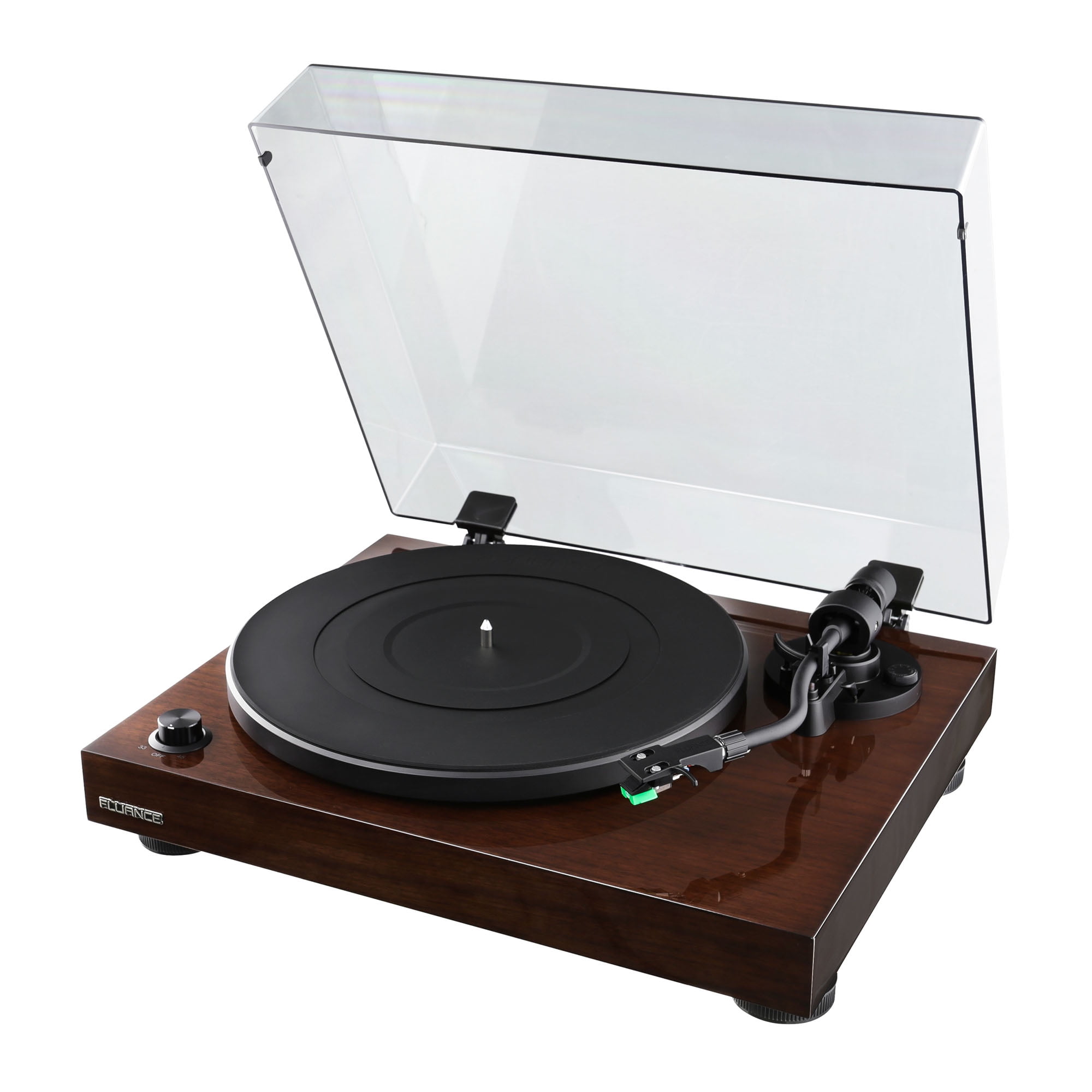

Materials such as aluminum & carbon fiber became popular for their strength and rigidity while remaining light and nimble. There can be no flex or movement in the tube while the cartridge is on the record, and the bearing from which the tonearm pivots should not allow the tonearm to wobble in any way. The name of the game here is absolute rigidity but nimble performance the tonearm must be extremely stiff and strong, while also very light in weight.
#Turntable record player full#
Most tonearms pivot from a full bearing, but there is a growing trend toward using uni-pivot designs that seek to keep bearing friction to a minimum by reducing the contact area of the moving surfaces. The part that holds your cartridge is called the headshell – some manufacturers use detachable headshells to make swapping cartridges easier, while others prefer the rigidity that comes with a single piece of tubing with no break.Īt the other end is your counterweight, which needs to be set correctly to apply the proper amount of tracking force. At the end of a tonearm is your cartridge, which has a needle (better known as the stylus) responsible for tracking your record’s groove. The TonearmĪ tonearm tube pivots from the edge of the record towards to center. There’s also the question of speed consistency, which can be better on a good direct drive system when compared with the issues of worn belts on a belt-driven deck. This traditionally makes them preferable for DJ applications. The reason being, decoupling the motor reduces resonances, which can make its way from the motor to the platter, and ultimately, into the audio system through the stylus.ĭirect drives have higher torque, meaning they get up to speed quicker and stop much faster.

When the motor spins, the belt drives the turntable.įor more on this topic, read our direct-drive vs belt-drive article.īelt-driven turntables are favored by the audiophile community. A rubber belt loops around the motor and also the platter. This motor “directly” drives the turntable.īelt Drive: In the case of a belt-driven turntable, the motor sits off to the side of the platter. There are two different drive system designs, both of which have their merits:ĭirect Drive: With a direct-drive turntable, the platter sits directly on the motor. The Drive SystemĪ drive system (housed by the plinth) is the motor that drives your platter. Both sound different, but acrylic is basically acoustically dead glass has a certain sound quality that some listeners enjoy.Īll designs, of course, have a metal center spindle that holds the record in place while the platter spins. Acrylic and glass plinths are popular for mass and resonance controlling properties. Metal platters tend to suffer from resonance, and very light aluminum designs don’t provide the ideal mass. Platter materials vary greatly, but the best designs have high mass for better speed consistency and dense construction to control resonance. Originally, however, the turntable was simply the rotating surface on which your records sit. If you want to draw a line between the two, most record collectors define all-in-one units with built-in speakers as “record players”, and separate decks that require an external amp and speakers as “turntables”. But when you understand the history of record players and the evolution from wax cylinder designs to flat records on a rotating platter (otherwise referred to as a turntable), you can see where the terms originated. The terms record player and turntable are often used interchangeably. For example, my Technics SL1500 is made from a dual-layer construction of die-cast aluminum and ABS (essentially a posh durable plastic) mixed with fibreglass.Īnother approach to plinth design is to keep the surface area as small as possible, thus by design keeping the potential for excessive resonance as low as possible. In this case, there are other approaches to controlling resonance. Solid bases are thought to control resonance very well, but there are examples of hollow units (particularly with DJ decks from the likes of Technics) where the chassis has to be hollow to house the circuit board components.


 0 kommentar(er)
0 kommentar(er)
